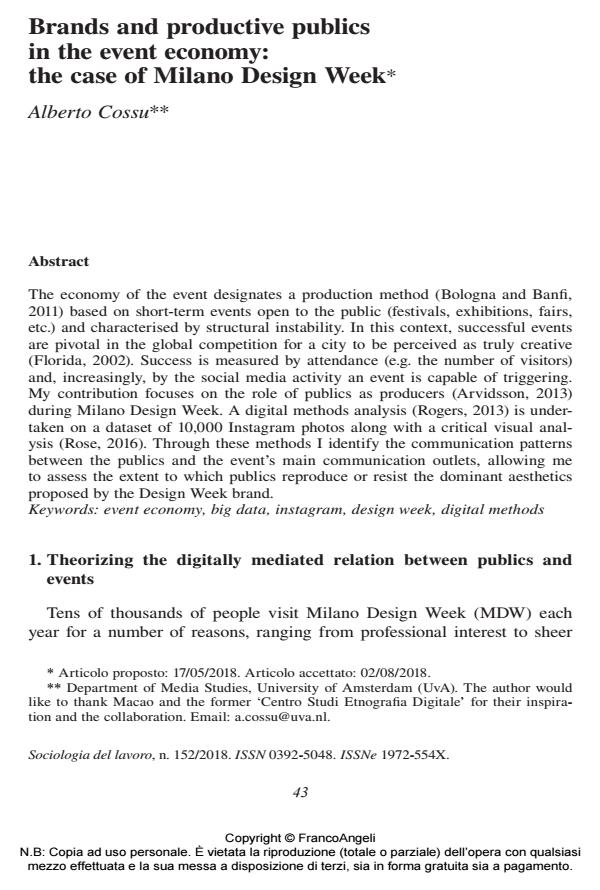Brands and productive publics in the event economy: the case of Milano Design Week
Journal title SOCIOLOGIA DEL LAVORO
Author/s Alberto Cossu
Publishing Year 2018 Issue 2018/152
Language English Pages 62 P. 43-64 File size 216 KB
DOI 10.3280/SL2018-152003
DOI is like a bar code for intellectual property: to have more infomation
click here
Below, you can see the article first page
If you want to buy this article in PDF format, you can do it, following the instructions to buy download credits

FrancoAngeli is member of Publishers International Linking Association, Inc (PILA), a not-for-profit association which run the CrossRef service enabling links to and from online scholarly content.
The economy of the event designates a production method (Bologna and Banfi, 2011) based on short-term events open to the public (festivals, exhibitions, fairs, etc.) and characterised by structural instability. In this context, successful events are pivotal in the global competition for a city to be perceived as truly creative (Florida, 2002). Success is measured by attendance (e.g. the number of visitors) and, increasingly, by the social media activity an event is capable of triggering. My contribution focuses on the role of publics as producers (Arvidsson, 2013) during Milano Design Week. A digital methods analysis (Rogers, 2013) is under¬taken on a dataset of 10,000 Instagram photos along with a critical visual anal¬ysis (Rose, 2016). Through these methods I identify the communication patterns between the publics and the event’s main communication outlets, allowing me to assess the extent to which publics reproduce or resist the dominant aesthetics proposed by the Design Week brand.
Keywords: Event economy, big data, instagram, design week, digital methods
Alberto Cossu, Brands and productive publics in the event economy: the case of Milano Design Week in "SOCIOLOGIA DEL LAVORO " 152/2018, pp 43-64, DOI: 10.3280/SL2018-152003